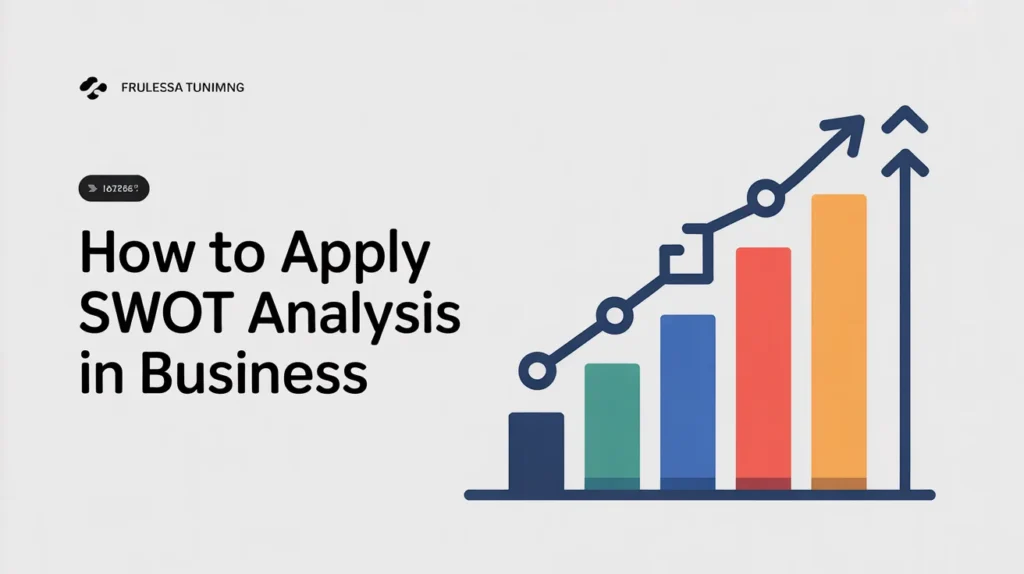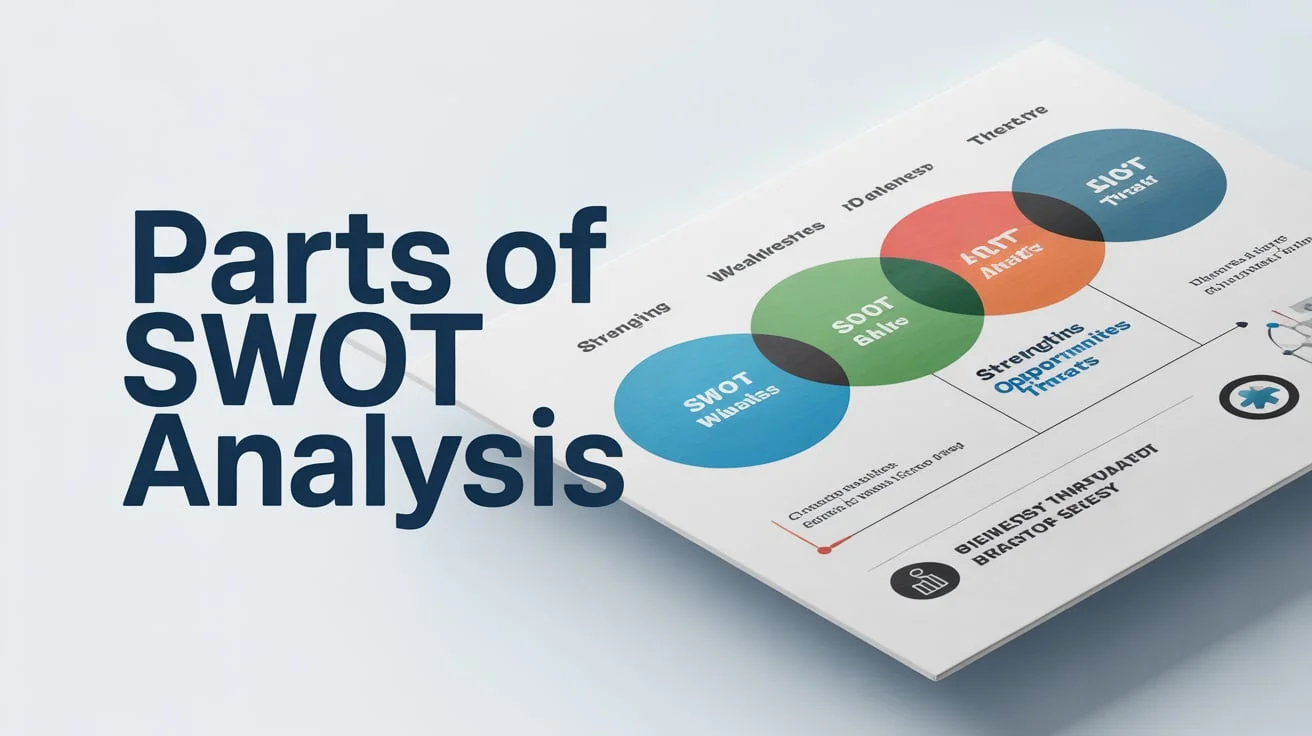Every successful business strategy begins with a clear understanding of strengths, weaknesses, opportunities, and threats. These four elements, known collectively as the parts of SWOT analysis, help individuals and organizations evaluate their internal and external environments to make smarter decisions.
Whether you’re running a start-up, managing a global enterprise, or simply mapping out your career path, mastering the parts of SWOT analysis provides a structured framework for identifying what works, what doesn’t, and where the best growth opportunities lie.
In this article, we’ll explore each part in detail, show practical examples, and explain how you can apply SWOT to achieve real results.
What is SWOT Analysis?
Before diving into the parts, it’s important to understand the definition of SWOT analysis. SWOT stands for:
- Strengths – internal qualities that give an advantage.
- Weaknesses – internal factors that hinder progress.
- Opportunities – external chances for growth or improvement.
- Threats – external risks that could cause problems.
SWOT is both simple and powerful. It gives you a snapshot of where you stand today and helps guide long-term planning.
The Four Main Parts of SWOT Analysis

Now let’s explore each part in detail with practical insights and examples.
Strengths in SWOT Analysis
Strengths are the positive qualities that set a business or individual apart from competitors. These are internal factors you can directly control.
Examples of Strengths:
- Strong brand reputation
- Loyal customer base
- Skilled workforce
- Proprietary technology
Why Strengths Matter: Recognizing strengths helps in leveraging them to gain competitive advantages. For example, Apple’s strong brand recognition allows it to charge premium prices.
Weaknesses in SWOT Analysis
Weaknesses highlight areas where improvement is needed. Unlike strengths, weaknesses expose internal gaps.
Examples of Weaknesses:
- High production costs
- Poor customer service
- Limited distribution channels
- Outdated technology
Why Weaknesses Matter: Acknowledging weaknesses allows companies to fix problems before they become major setbacks. For instance, a restaurant with slow service may lose loyal customers if the issue isn’t addressed.
Opportunities in SWOT Analysis
Opportunities are external factors that can be used to drive growth. They are often found in market trends, new technology, or shifts in consumer behavior.
Examples of Opportunities:
- Expanding into emerging markets
- Launching eco-friendly products
- Adopting AI or automation
- Growing demand for online services
Why Opportunities Matter: Opportunities enable businesses to innovate and expand. Netflix, for instance, leveraged the opportunity of rising internet penetration to transition from DVD rentals to online streaming.
Threats in SWOT Analysis
Threats are external challenges that could damage a business. They may come from competitors, economic downturns, or changing regulations.
Examples of Threats:
- Intense competition
- Rising raw material costs
- Government policy changes
- Market saturation
Why Threats Matter: Identifying threats early allows businesses to create strategies that reduce risk. For example, during the COVID-19 pandemic, restaurants faced threats from lockdowns, but many survived by offering delivery services.
Table: Summary of SWOT Analysis Parts

PartDefinitionExamplesFocusStrengthsInternal advantages that set you apartSkilled team, loyal customers, strong brandLeverage for growthWeaknessesInternal limitations holding you backHigh costs, weak online presenceImprove or minimizeOpportunitiesExternal chances for expansion or successNew markets, tech adoption, eco-productsCapture and innovateThreatsExternal risks or challengesCompetition, regulations, economic downturnPrepare and mitigate
Why the Parts of SWOT Analysis Work Together
It’s important to understand that each part of SWOT doesn’t exist in isolation. They interact with each other:
- Strengths can help overcome weaknesses.
- Opportunities can only be seized if weaknesses are managed.
- Threats can be minimized by leveraging strengths.
This interconnectedness makes SWOT a dynamic tool for strategy development.
Real-Life Examples of SWOT Analysis
Example 1: Starbucks
- Strengths: Global brand recognition, strong supply chain.
- Weaknesses: High product prices, dependency on US market.
- Opportunities: Growing demand for sustainable coffee.
- Threats: Competition from local coffee shops.
Example 2: Tesla
- Strengths: Innovative electric car technology.
- Weaknesses: Production challenges and delays.
- Opportunities: Increasing demand for green vehicles.
- Threats: Rising competition from established automakers.
Benefits of Understanding SWOT Parts
Understanding the parts of SWOT analysis offers many advantages:
- Simplifies decision-making
- Highlights areas for improvement
- Identifies growth opportunities
- Prepares for risks
- Creates a roadmap for long-term strategy
How to Apply SWOT Analysis in Business

- Brainstorm with your team. Gather insights from different departments.
- List internal strengths and weaknesses. Be honest and specific.
- Scan the external environment. Look at competitors, markets, and trends.
- Prioritize factors. Not all elements carry equal weight.
- Develop strategies. Use strengths to grab opportunities and reduce threats.
Common Mistakes to Avoid in SWOT Analysis
- Being too vague (“good customer service” instead of measurable KPIs).
- Ignoring external data.
- Listing too many factors without prioritization.
- Treating SWOT as a one-time activity instead of reviewing regularly.
Using SWOT Beyond Business
SWOT isn’t just for companies—it works for personal development, career planning, and even project management. For example:
- Personal SWOT: Identifying skills (strengths), lack of experience (weakness), new training programs (opportunities), and job competition (threats).
- Educational SWOT: Schools can assess teaching methods, resources, and student opportunities.
Conclusion
The parts of SWOT analysis—strengths, weaknesses, opportunities, and threats—provide a powerful framework for strategy and growth.
By honestly assessing these four areas, individuals and organizations can build on their strengths, fix their weaknesses, seize new opportunities, and prepare for potential threats.
Whether in business or personal life, SWOT analysis remains one of the simplest yet most effective tools for informed decision-making.
FAQs
1. What are the four parts of SWOT analysis? The four parts are strengths, weaknesses, opportunities, and threats.
2. Why is SWOT analysis important in business? It helps identify internal and external factors that affect performance, guiding better decision-making.
3. Can individuals use SWOT analysis? Yes, it’s useful for career planning, personal growth, and skill development.
4. How often should SWOT analysis be done? It should be reviewed regularly, at least once a year, or when major changes occur in the market.
5. What’s the difference between internal and external factors in SWOT? Strengths and weaknesses are internal, while opportunities and threats are external.


